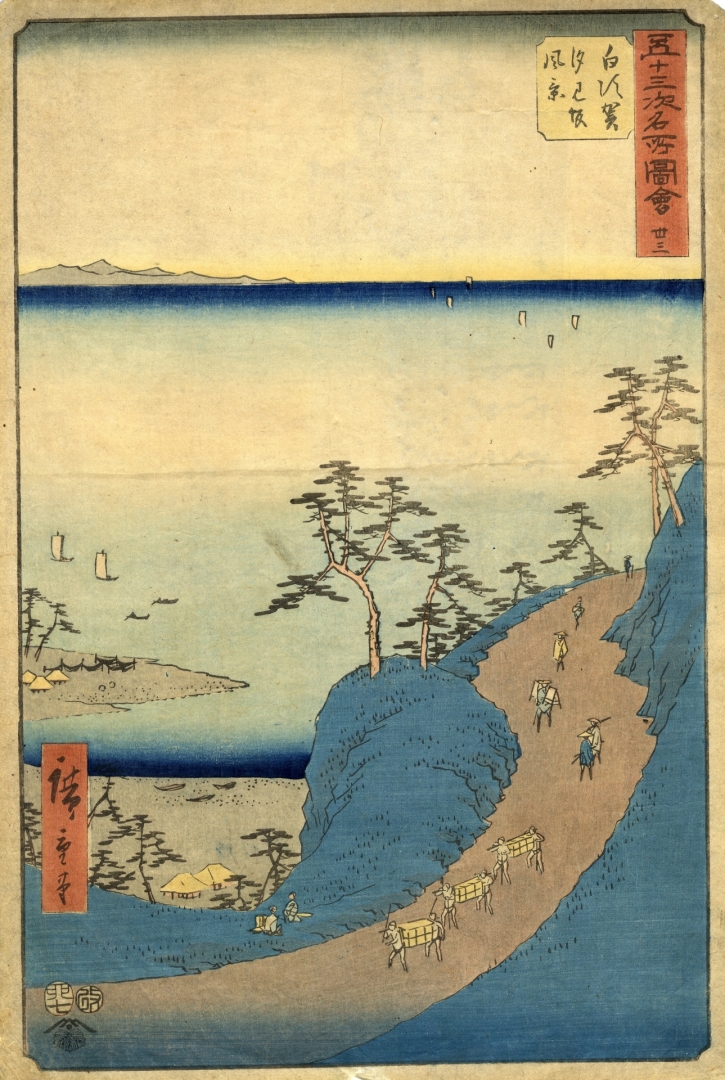Tōkaidō was the main road during the Edo period (1603–1868), which linked Kyoto and Edo. It went along the Eastern coast of Japan, and its scenic landscapes impressed many artists.
The collection of the Latvian National Museum of Art (LNMA) has six ukiyo-e prints by Utagawa Hiroshige (1797–1858) from various 53 Stations of Tōkaidō series. This series made Hiroshige one of the best ukiyo-e landscape artists alongside his already well-known contemporary Katsushika Hokusai (1760–1849).
The Hiroshige’s works arrived at the museum in 1956, having been purchased from the collection of Latvian sculptor Gustavs Šķilters (1874–1954). It is most likely that he acquired these ukiyo-e prints in Paris (1900–1905), where he was studying at the workshop of Auguste Rodin.
Nowadays, Hiroshige is viewed as one of the last great masters of the Japanese traditional ukiyo-e, and his oeuvre has influenced numerous European and American artists in the 2nd half of the 19th century and the beginning of the 20th century.





